

Lavender is famous in the Mediterranean for its fragrance and color. Care for it well!
Key Lavender facts
Name – Lavandula species
Family – Lamiaceae
Type – shrub, sub-shrub
Height – 8 to 32 inches (20 to 80 cm)
Exposure – full sun
Soil: ordinary, well drained – Foliage: evergreen – Flowering: summer
Read also:
Planting, pruning and care are steps that help enhance blooming and growth of your lavender.
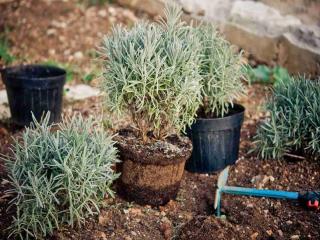
Prepare a place that is well endowed with sunlight and very well drained soil.
Sometimes, freshly planted lavender dies after a few weeks, because the soil is too moist. That is why it is crucial to have very well drained soil.
To grow a lavender hedge, plant one stem every 12 to 16 inches (30 to 40 cm).
Growing lavender in a pot is possible. It’s an excellent idea for terraces, decks, balconies and the like: the fragrance will fill the air around it!
When growing in a pot, be wary of giving the plant too much sun because the soil dries out very fast.
Pruning lavender is possible, but must be exclusively performed on growth that still bears leaves. If you prune dry wood, they won’t grow back…
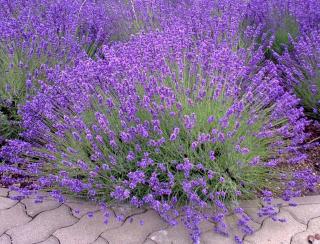 At the end of winter, prune as you wish, but follow the rounded shape of the plant.
At the end of winter, prune as you wish, but follow the rounded shape of the plant.Cut lavender flowers are an excellent way to perfume clothes and laundry.
Lavender must be lightly watered at the beginning, but usually can keep growing without further watering.
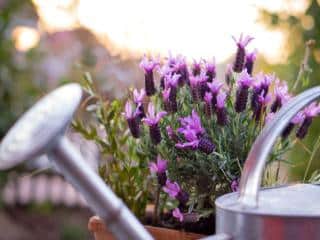
Definitely something to diligently do every single year. This regularity is what helps keep a wonderfully full, round mound of flowers.
It’s easy to propagate lavender. Three techniques make exact copies of an initial lavender plant: cuttings, layering (including air-layering), and crown division. Cuttings can produce lots of new plants, fast. Layering your lavender is when you anchor a stem to the ground for roots to develop. Crown division, in simple terms, is “splitting the clump”.
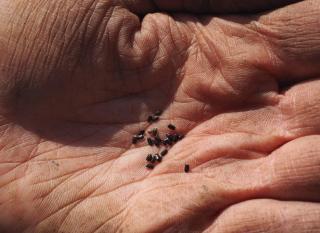
Indeed, thanks to flowers cross-pollinating each other, the child will only inherit a portion of the mother plant’s characteristics.
Most lavenders on the market are lavandin hybrids. These tend to be sterile, though, and won’t bear seeds.
Lavender flowers and branches can keep for months as dried flowers. Even years, if kept in a dry place sheltered from the sun’s rays.
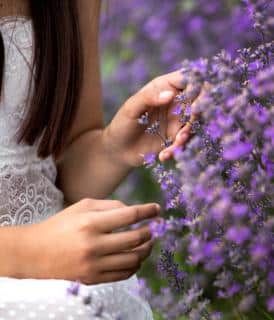
The most common varieties are English lavender, followed closely by French lavender (here’s how to tell them apart).
When traveling around Europe and the Mediterranean, you’ll encounter many more varieties of lavender, such as Lavandin, Spanish lavender, Egyptian lavender…
When soil and light conditions are right, nothing will kill your lavender but old age. Possible diseases include root rot and leaf spot.
What to do to heal root rot on lavender
There’s a small chance to save your plant:
This will put the plant in a better condition to fight the fungus off and bounce back.
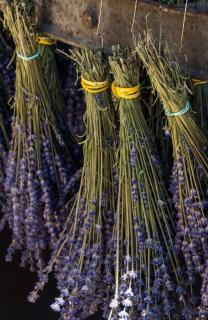
Native to the Mediterranean area, lavender was first used by Romans to protect cloth and in public baths. Today lavender also beautifies our rock beds and flower beds in the garden.
It was used in Provence (France) early on to produce perfume and medicine thanks to its benefits and medicinal properties.
A very engaging plant, this sub-shrub is one of the symbols of French Provence and of the Mediterranean sun, together with the olive tree.
Easy to care for, lavender only requires minimal watering in case of high temperatures.
Infuse flowers in other oils to use its benefits. Lavender oil remains a major ingredient in perfumes and essential oils, especially in the Grasse region.
Cook with lavender as a garden herb in the same manner you would rosemary: add them to marinades, grills, and even bouquet garni!
Mulch the base of your lavender plants with cocoa hulls for a very ornamental result. Additionally, the lavender scent combined with chocolatey cocoa is a real treat!
Read also
Thank you for this information. My lavender always dies off. Guess I’ve been over watering it. Will use you suggestions. Hope I can save it.
Yes, overwatering is what most often kills lavender off. It can really take drought well, so wait until the soil is dry even down to a couple inches before watering again. This is especially true if the plant is in a pot and that the pot doesn’t have any drainage holes.